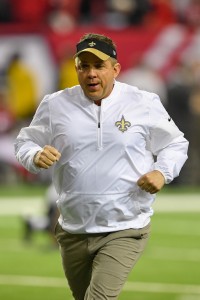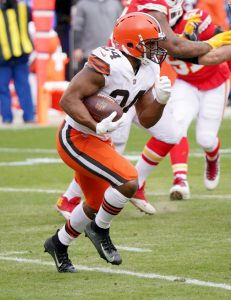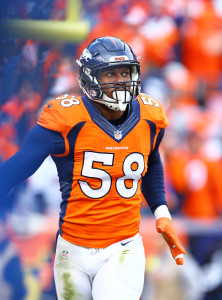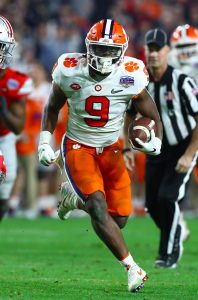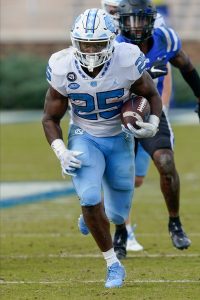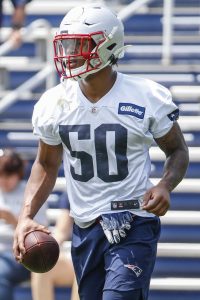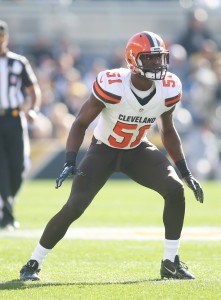When we ran down the longest-tenured head coaches in the NFL, we found that just about half of the league’s current coaches have been in their positions for more than three years. That’s not quite the case with general managers, but there have been plenty of changes in recent years.
A handful of general managers have gotten to take their coats off and stay for a long while. Among coaches, Bill Belichick had joined his team prior to 2003. Here, you’ll see that five GMs have been with their teams since before ’03 (Belichick, of course, is also on this list). Two of those five – Jerry Jones and Mike Brown – are outliers, since they’re team owners and serve as de facto GMs. But the Patriots, Steelers, and Saints, have all had the same general managers making their roster decisions for well over a decade.
Here’s the complete list of the NFL’s longest-tenured GMs, along with the date they took over the job:
- Jerry Jones (Dallas Cowboys): April 18, 1989[1]
- Mike Brown (Cincinnati Bengals): August 5, 1991[2]
- Bill Belichick (New England Patriots): January 27, 2000[3]
- Kevin Colbert (Pittsburgh Steelers): February 18, 2000[4]
- Mickey Loomis (New Orleans Saints): May 14, 2002
- Rick Spielman (Minnesota Vikings): May 30, 2006[5]
- John Schneider (Seattle Seahawks): January 19, 2010[6]
- Howie Roseman (Philadelphia Eagles): January 29, 2010
- Les Snead (St. Louis Rams): February 10, 2012
- Steve Keim (Arizona Cardinals): January 8, 2013
- Tom Telesco (San Diego Chargers): January 9, 2013
- Jason Licht (Tampa Bay Buccaneers): January 21, 2014
- Ryan Pace (Chicago Bears): January 8, 2015
- Chris Grier (Miami Dolphins): January 4, 2016
- Jon Robinson (Tennessee Titans): January 14, 2016
- John Lynch (San Francisco 49ers): January 29, 2017
- Chris Ballard (Indianapolis Colts): January 30, 2017
- Brandon Beane (Buffalo Bills): May 9, 2017
- Brett Veach (Kansas City Chiefs): July 11, 2017
- Dave Gettleman (New York Giants): December 28, 2017
- Brian Gutekunst (Green Bay Packers): January 7, 2018
- Mike Mayock (Oakland Raiders): December 31, 2018
- Eric DeCosta (Baltimore Ravens): January 7, 2019[7]
- Joe Douglas (New York Jets): June 7, 2019
- Andrew Berry (Cleveland Browns): January 27, 2020
- Nick Caserio (Houston Texans): January 7, 2021
- George Paton (Denver Broncos): January 12, 2021
- Scott Fitterer (Carolina Panthers): January 14, 2021
- Brad Holmes (Detroit Lions): January 14, 2021
- Terry Fontenot (Atlanta Falcons): January 19, 2021
- Trent Baalke (Jacksonville Jaguars): January 21, 2021
- Martin Mayhew (Washington Redskins): January 22, 2021
Footnotes:
- Jones has been the Cowboys’ de facto general manager since former GM Tex Schramm resigned in April 1989.
- Brown has been the Bengals’ de facto GM since taking over as the team’s owner in August 1991.
- Belichick has been the Patriots’ de facto GM since shortly after being hired as the team’s head coach in January 2000.
- Colbert was initially hired as the team’s director of football operations and received the newly-created general manager title in 2011.
- Spielman was initially hired as the team’s VP of player personnel and received the GM title in 2012.
- While Schneider holds the title of GM, head coach Pete Carroll has the final say on roster moves for the Seahawks.
- In 2018, the Ravens announced that DeCosta would replace Ozzie Newsome as GM for Ozzie Newsome after the conclusion of the season. The Ravens’ ’18 season ended with their Wild Card loss to the Chargers on 1/6/19.

